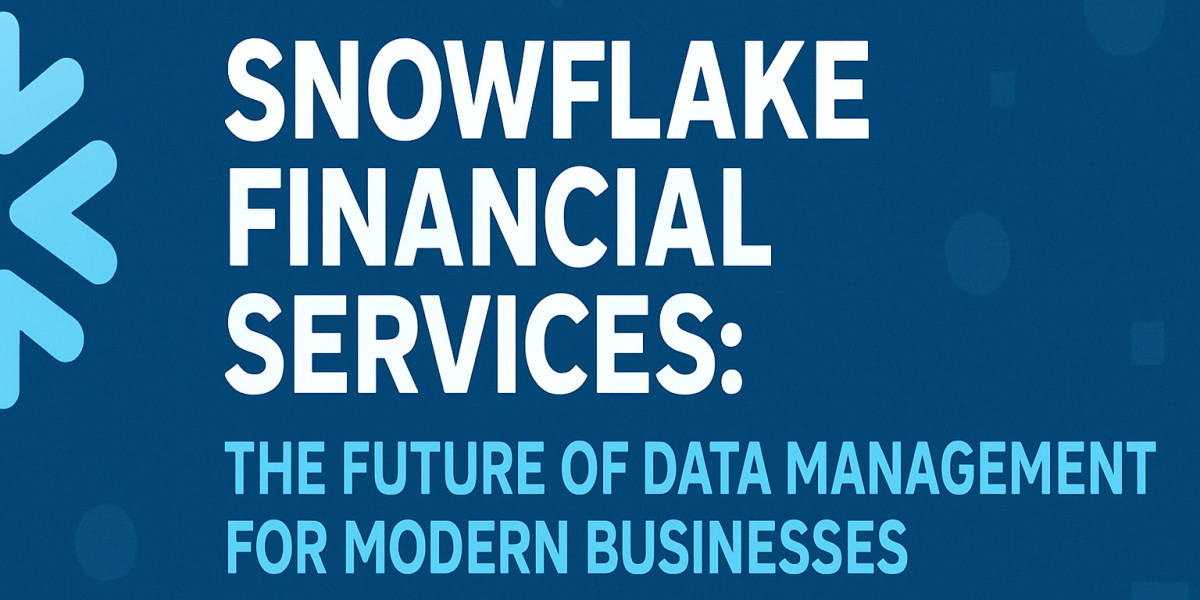In today’s competitive business world, financial institutions are under more pressure than ever to manage massive amounts of data securely, quickly, and cost-effectively. Snowflake financial services have emerged as a game-changer, helping banks, investment firms, insurance companies, and fintech enterprises make the most of their data.
With its unique cloud-based architecture, Snowflake enables businesses to store, process, and analyze data in real time—without the high infrastructure costs that come with traditional systems.
Whether you’re a CFO looking for better forecasting tools, a CTO wanting secure and scalable storage, or a business owner seeking actionable insights from your financial data, Snowflake offers a flexible and future-ready solution.
Why Data Is the New Gold in Financial Services
The financial sector is one of the most data-intensive industries in the world. According to IDC, global data creation will reach 175 zettabytes by 2025, and financial companies are expected to be among the top contributors to that growth. This includes transaction records, customer profiles, compliance data, market analytics, and more.
The challenge is that traditional databases often struggle with:
Scaling up during peak demand (like market volatility days)
Data silos between departments
Real-time analytics without downtime
Strict compliance with regulations like GDPR, PCI DSS, and CCPA
That’s where Snowflake cloud services stand out. They offer the speed, scalability, and security financial firms need—without forcing a complete IT overhaul.
Understanding Snowflake for Financial Services
At its core, Snowflake data cloud is a fully managed platform built to handle structured and semi-structured data. What makes it different is its separation of compute and storage, which means you can scale each independently based on your needs.
For financial services, this means:
Faster reporting for executives
Advanced fraud detection with machine learning integration
Simplified compliance with secure data sharing
Cost control by only paying for the compute time you use
Example: An investment firm can run complex risk models during trading hours without slowing down other teams working on customer analytics.
Key Features of Snowflake for Financial Companies
1. Real-Time Data Sharing
Snowflake’s secure data sharing allows financial organizations to share live, governed data with partners, regulators, and internal teams—without duplication. This eliminates delays caused by moving files or creating separate databases.
2. Elastic Scaling
During market surges or end-of-quarter reporting, your data workload can spike. With Snowflake, you can instantly scale up compute resources and scale down when the demand drops—helping control costs.
3. Advanced Security and Compliance
Snowflake is built with end-to-end encryption, multi-factor authentication, and compliance with major regulations like SOC 2 Type II, ISO 27001, and PCI DSS. For the financial industry, this level of security is critical to protecting sensitive customer data.
4. Multi-Cloud Flexibility
Snowflake supports AWS, Azure, and Google Cloud, giving businesses the flexibility to work across platforms and avoid vendor lock-in.
The Role of Snowflake Consulting Services
While Snowflake’s platform is user-friendly, implementing it for a large financial organization requires strategy and expertise. Snowflake consulting services help businesses:
Migrate existing databases without downtime
Optimize data models for analytics
Integrate Snowflake with business intelligence (BI) tools like Tableau or Power BI
Build custom dashboards for real-time reporting
SoftProdigy, for example, has worked with financial clients to design Snowflake-based architectures that improve both performance and cost efficiency.
Snowflake Data Storage and Warehousing for Finance
Financial companies store petabytes of data—from daily transactions to historical records for audits. Snowflake data storage uses a compressed columnar format, which means you get high performance without excessive storage costs.
Its data warehousing capabilities allow financial institutions to:
Run queries on massive datasets in seconds
Store historical market data for trend analysis
Merge multiple data sources for a single source of truth
Stat to note: According to Snowflake, companies using their cloud data platform see up to 60% lower storage costs compared to traditional on-premise solutions.
Real-World Use Cases of Snowflake in Financial Services
Fraud Detection – By integrating Snowflake with AI and ML tools, banks can detect suspicious transactions within milliseconds.
Customer 360° View – Merging data from CRM, transactions, and digital touchpoints gives financial advisors a complete view of each customer’s behavior.
Risk Management – Large-scale risk modeling can be done in real-time to adjust investment portfolios.
Regulatory Reporting – Automating compliance reports saves time and reduces errors.
Challenges Snowflake Solves for Financial Enterprises
Breaking Down Data Silos – Data from retail banking, wealth management, and corporate banking can be unified.
Improving Decision Speed – Executives get real-time dashboards for market trends and performance metrics.
Reducing IT Costs – Pay-as-you-go pricing avoids costly idle server time.
Future-Proofing Operations – The platform is built to scale with business growth.
Why US Enterprises Are Moving to Snowflake
In the US, the financial industry faces increasing competition from fintech startups and the pressure of tighter regulations. Snowflake enables large organizations to move faster without sacrificing security.
A 2024 McKinsey report shows that financial companies using cloud-based data solutions like Snowflake can achieve:
20–30% faster time-to-market for new products
50% improvement in analytics efficiency
25% reduction in operational costs
This makes Snowflake not just a technology upgrade, but a competitive advantage.
How to Get Started with Snowflake in Financial Services
For enterprises considering the move, the process generally involves:
Assessment – Reviewing your current data systems and compliance needs.
Migration Planning – Deciding which datasets move first.
Integration – Connecting Snowflake to BI tools, CRMs, and regulatory systems.
Training – Upskilling teams to use Snowflake efficiently.
Optimization – Fine-tuning compute resources for cost and performance.
Final Thoughts: Snowflake Financial Services as a Strategic Asset
The financial services industry is no stranger to disruption. From digital banking to blockchain, change is constant—and those who adapt quickly win. Snowflake financial services provide the foundation for this adaptability by offering speed, security, and scalability without the headache of traditional IT infrastructure.
Whether you need to store decades of historical data, run lightning-fast analytics, or meet strict compliance requirements, Snowflake’s data cloud approach makes it possible. And as more US enterprises recognize the value of data as a strategic asset, platforms like Snowflake will become the backbone of their operations.
In a world where every second counts and every decision matters, Snowflake isn’t just another cloud tool—it’s the data engine powering the next wave of financial innovation.








